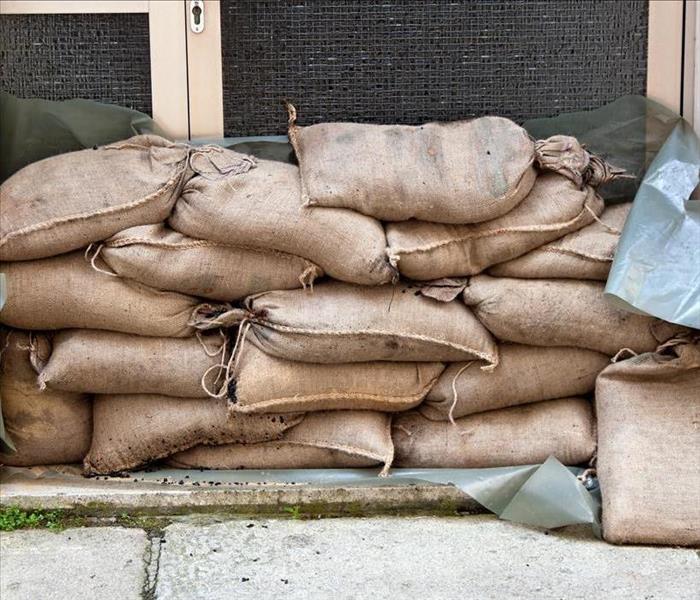Prevent Flood Damage With Advance Preparations
4/15/2021 (Permalink)
Flooding is one of the most common types of damage after a natural disaster. It can happen anywhere, during any time of the year, and as the result of many causes.
Prevent Flood Damage
One of the best ways to prevent flood damage is to prepare before any signs of trouble:
- Consistently inspect and repair check valves and vulnerable spots where sewer and utility lines enter your facility.
- Protect vulnerable equipment, such as appliances, computers, and heaters, by moving them above the water level.
- Reach out to Surry, VA, water damage cleanup and prevention crews for tips on improving the watertight qualities of your building.
- Contact your insurance provider to be sure your policy includes water damage and for specific damage prevention advice.
Once you've done what you can to minimize any damage if water does get into your building, the next step is to keep as much flood water out when storm damage is imminent.
Water Control Supplies
There are several items you can purchase and keep on hand that are helpful when flooding occurs:
- Keep sandbags on hand to place around doors and windows.
- Store flood boards for your doors, so water doesn't get in when doors are opened.
- Keep a pump on hand to remove floodwater.
- Plastic sheeting, plywood, nails, and hammers are necessary for protecting vulnerable areas of the facility.
- Include a few shovels in your storage.
- Make sure you have first aid emergency kits installed around your facility, so they are easy to access.
With the right supplies on hand, you and your employees may feel more confident when rain or rising rivers threaten your business.
Routine Training and Education
Finally, you and everyone in your building should know how to behave when your facility is threatened. Create a flood plan that includes contact information for emergency response teams, anyone involved in caring for the building, and other critical team members. This plan should also include posted maps that show evacuation routes, shut-off points, and first aid kits.
When flooding does happen, you don't have much time to respond. When you've prepared, however, your employees know how to respond quickly for safety and damage control.




 24/7 Emergency Service
24/7 Emergency Service
